 On our way back from Cancun we had to dodge a few thunderheads while crossing the Bay of Campeche. The sun was low. It was perfect light for photography. (more…)
On our way back from Cancun we had to dodge a few thunderheads while crossing the Bay of Campeche. The sun was low. It was perfect light for photography. (more…)
August 23, 2011 | Categories: Flying the Line, Uncategorized | Tags: aerial, aerial photo, aerial photography, Bay of Campeche, cloudscape, flight, flying, photo, photograph, photography, sunset, thunderstorms, weather | 2 Comments
 Here’s a photo of a lone thunderhead above North Carolina. I took this aerial picture a few years ago while I was working at PSA Airlines. This picture is one of my favorite aerial images. I like how the sun is barely peaking out from behind the cloud and the sunbeams it forms. Getting this shot to work was tricky business. The cloud was out the side window and fairly close to us. We were traveling at over 300 mph causing the compositional elements to change rapidly. This meant I only had a second or less where the sun would be in just the right place. As we passed this fantastic cloud I waited till just the exact millisecond to push the shutter button. I didn’t want to rely on burst mode out of fear the timing between frames would be off. In the end, I was more than satisfied with the results.
Here’s a photo of a lone thunderhead above North Carolina. I took this aerial picture a few years ago while I was working at PSA Airlines. This picture is one of my favorite aerial images. I like how the sun is barely peaking out from behind the cloud and the sunbeams it forms. Getting this shot to work was tricky business. The cloud was out the side window and fairly close to us. We were traveling at over 300 mph causing the compositional elements to change rapidly. This meant I only had a second or less where the sun would be in just the right place. As we passed this fantastic cloud I waited till just the exact millisecond to push the shutter button. I didn’t want to rely on burst mode out of fear the timing between frames would be off. In the end, I was more than satisfied with the results.
So why am I posting old photos on my blog? Well, my camera is still out of commission and I have to keep you readers happy somehow. Also, I have been busy working on my professional photography website. Last week, I did a lot of work on my aerial and aviation photo gallery and I have put prints up for sale!
To celebrate my first print sale I am giving out a promo code for 50% off all prints. When you get to the end of the checkout process enter this code into the promo code box: fixmycamera. You’ll see the price of your print order cut in half and you’ll be funding the repair of my Canon 5D at the same time! Think of how good that will make you feel.
Decorate your home, office, or man cave with some fantastic aerial and images! Act fast, the promo code expires at the end of the month.
July 15, 2011 | Categories: Flying the Line | Tags: aerial, aerial photo, aerial photography, flight, flying, photo, photograph, photography, sunset, thunderstorms, weather | 3 Comments
 This is a view of Mount Charleston near Las Vegas, Nevada. We had this great sunset view a few days ago while flying from San Francisco to Las Vegas. In the background you can see a small thunderstorm. Over the past week I’ve had to dodge my first thunderstorms of the season. I love spring and summer flying. Stay tuned. I’m sure there will be more interesting aerial photos posted soon.
This is a view of Mount Charleston near Las Vegas, Nevada. We had this great sunset view a few days ago while flying from San Francisco to Las Vegas. In the background you can see a small thunderstorm. Over the past week I’ve had to dodge my first thunderstorms of the season. I love spring and summer flying. Stay tuned. I’m sure there will be more interesting aerial photos posted soon.
April 24, 2011 | Categories: Flying the Line, Uncategorized | Tags: aerial, aerial photo, aerial photography, aviation, flight, flying, las vegas, Mount Charleston, Mountain, nevada, photo, photograph, photography, sunset | Leave a comment
I went sledding with Ella and some friends. The light was tricky — snow, setting sun, and black coats. It was getting dark. I went with ISO 500 and fired away.




January 20, 2011 | Categories: Uncategorized | Tags: milwaukee, photo, photograph, photography, snow, sunset, winter, wisconsin | 2 Comments
In the back of my mind I keep a catalogue of places I would love to photograph. As I fly back and forth across the United States I often look down and drool at potential photo locations. These are the lusts of a landscape photographer. Give me a month alone with my camera and tripod please! Once in awhile fortune shines on me, and I get a chance to lug my tripod onto a craggy outcropping to watch a sunset.
Last week, I had a bit of luck. I got let out of work in the morning, in San Francisco. Normally, I would immediately start my commute back to Milwaukee, but I had to work again the next day in San Francisco. There was no way to get home and get back in time for work the next day. I was stuck. With nothing to do I decided to get a rental car and head out to take some photos.
The Bay Area has many fantastic locations for a landscape photographer to set up his tripod. One spot that I always wanted to explore is the area just north of the Golden Gate Bridge. All the tourists stop to take pictures of the bridge, but not too many people bother to explore deeper into the Marin Headlands. For me, that’s where all the excitement is. Marin Headlands is all cliffs dropping into green blue ocean, and wisps of fog mixed with California sun. It has all the elements landscape photographers dream about.

Here is the spot I staked out for photographing the sunset. That’s my trusty Benro Tripod standing all too close to the edge of a sea cliff. As I shot from this location I had to remind myself not to get so deep into photography that I’d forget about the cliff edge. When I was shooting towards the south my right foot was only a foot from the edge. “If you drop a lens cap, just let it go,” I told myself over and over.
 To give you a sense of the drop here is a bit of beach below the cliff. Check out the ship wreckage. I didn’t want my bleached bones adding to the aesthetic for the next photographer.
To give you a sense of the drop here is a bit of beach below the cliff. Check out the ship wreckage. I didn’t want my bleached bones adding to the aesthetic for the next photographer.
 Here is the view to the north of my perch taken about twenty minutes before sunset. This area is called Point Bonita. If you look really close you can see some cars and people on a distant overlook. A lesson for new landscape photographers: The car pullout is sometimes the best overlook. Sometimes there is no need to hike your equipment in for a better look. Many of Ansel Adam’s most famous photos were taken from car pullouts, and lots of those were taken from while standing on the roof of his car! Other times you’ll need to do some hiking. I find Google Maps satellite view the best tool for scooting photo locations. I found this location via Google Maps. There wasn’t an official trail to this overlook. You just have to discover yourself. With the help of Google and The National Space Program everything is now easy to find!
Here is the view to the north of my perch taken about twenty minutes before sunset. This area is called Point Bonita. If you look really close you can see some cars and people on a distant overlook. A lesson for new landscape photographers: The car pullout is sometimes the best overlook. Sometimes there is no need to hike your equipment in for a better look. Many of Ansel Adam’s most famous photos were taken from car pullouts, and lots of those were taken from while standing on the roof of his car! Other times you’ll need to do some hiking. I find Google Maps satellite view the best tool for scooting photo locations. I found this location via Google Maps. There wasn’t an official trail to this overlook. You just have to discover yourself. With the help of Google and The National Space Program everything is now easy to find!
As sunset approached the excitement quickly mounted. These are the moments I live for. To most people a sunset seems like a leisurely process. The slow fade of day into night. To a hard working photographer sunset is a rush. It doesn’t last long at all. Anyone who has ever tried to capture the rapidly changing light will tell you how short a sunset feels and how quickly you must react to capture it properly. To counteract the feeling of limited time I consciously try to slow my movements. I tell myself to breath, and I take long moments away from the camera to reconsider different compositions.
 Here is the payoff. This is Point Bonita Lighthouse and the entrance to The Golden Gate. This photo was taken well after the sun had fallen below the horizon. It was actually somewhat darker in reality than this photo depicts. I was having a hard time getting my camera to auto focus and it was way too dark to manually focus. I couldn’t see much through the view finder except shadows. To get my camera to focus I had to place the center focus point on the lighthouse, let the camera auto focus, and then switch to manual focus and recompose the picture without bumping the focus ring. There was no way to tell if this technique was working. My camera’s LCD wasn’t showing enough detail, even fully zoomed in, to decipher whether the lighthouse was in focus. To hedge my bets I shot with a tiny aperture in order to get maximum depth of field. Also, I took lots of duplicate pictures hoping that one would be sharp.
Here is the payoff. This is Point Bonita Lighthouse and the entrance to The Golden Gate. This photo was taken well after the sun had fallen below the horizon. It was actually somewhat darker in reality than this photo depicts. I was having a hard time getting my camera to auto focus and it was way too dark to manually focus. I couldn’t see much through the view finder except shadows. To get my camera to focus I had to place the center focus point on the lighthouse, let the camera auto focus, and then switch to manual focus and recompose the picture without bumping the focus ring. There was no way to tell if this technique was working. My camera’s LCD wasn’t showing enough detail, even fully zoomed in, to decipher whether the lighthouse was in focus. To hedge my bets I shot with a tiny aperture in order to get maximum depth of field. Also, I took lots of duplicate pictures hoping that one would be sharp.
Camera Settings: 43 mm, ISO 50, f/14, 30 seconds
 This is a closer view of the lighthouse. I used my Canon 135 f/2 L lens for this. The prime lens is not optimal for landscape shots. It doesn’t zoom. However, it worked well here because its light weight made it easier to handle on a tripod in the dark than a cumbersome 70-200 mm zoom. I had to use the same focus and recompose trick that I used for the previous shot. I don’t know if that type of movement would have been possible with a big white lens.
This is a closer view of the lighthouse. I used my Canon 135 f/2 L lens for this. The prime lens is not optimal for landscape shots. It doesn’t zoom. However, it worked well here because its light weight made it easier to handle on a tripod in the dark than a cumbersome 70-200 mm zoom. I had to use the same focus and recompose trick that I used for the previous shot. I don’t know if that type of movement would have been possible with a big white lens.
This picture was taken in manual mode. It was dark! It was beyond -2 EV dark. the only way to get this type of shot was manual mode. I simply made up the settings by chimping the histogram. The limiting factor was my camera’s maximum 30 second shutter speed. As it got darker and darker I had to keep opening the aperture to let more light in. This picture was taken at ISO 50, f/6.3, and 30 seconds. Eventually, it got so dark that I had to break out my remote release and use bulb mode. Believe it or not, my junky LG cellphone has a built in stopwatch. It comes in handy when you’re shooting in bulb mode.
 This shot is similar settings as the previous picture. It was also shot with my 135mm lens, just tilted up higher to get some city lights in the background. Once again, I focused on the lighthouse. Look how at how sharp the city lights look in the distance. How can this be? I focused on the lighthouse and was shooting at f/6.3. For the long answer read this Wikipedia entry on Hyperfocal Distance.
This shot is similar settings as the previous picture. It was also shot with my 135mm lens, just tilted up higher to get some city lights in the background. Once again, I focused on the lighthouse. Look how at how sharp the city lights look in the distance. How can this be? I focused on the lighthouse and was shooting at f/6.3. For the long answer read this Wikipedia entry on Hyperfocal Distance.
I could have stayed out all night and waited for the fog to roll in, but I had a rental car that was due back at 9:30 p.m. With flashlight in hand I made my way down the hill. Two hours later I was back at the SFO parking garage.
November 20, 2010 | Categories: Uncategorized | Tags: Bay Area, california, golden gate, marin headlands, night, photo, photograph, photography, photos, point bonita, point bonita lighthouse, san francisco, sunset | 6 Comments
 Are you noticing a mountain snow theme here lately? It’s not intentional. Over the last few weeks my best aerial photos have all been fresh snow on mountains. In this photo you are looking at the Rocky Mountains just south of Aspen, CO. It’s moments before sunset. The alpine glow looks nice even from six miles high.
Are you noticing a mountain snow theme here lately? It’s not intentional. Over the last few weeks my best aerial photos have all been fresh snow on mountains. In this photo you are looking at the Rocky Mountains just south of Aspen, CO. It’s moments before sunset. The alpine glow looks nice even from six miles high.
November 17, 2010 | Categories: Flying the Line | Tags: aerial, aerial photo, aerial photography, aspen, colorado, flight, flying, photo, photograph, photography, Rocky Mountains, sunset | 6 Comments
 If you recognize the title of this post it is possible that your high school social life might have been at least as pathetic as mine. Set the Controls for the Heart of the Sun is an early Pink Floyd song off their album Ummagumma. I think I am the only person that ever bought that album post 1975. No matter, I think when Rodger Waters wrote that song he must of had some idea what it feels like to fly a west bound jet airliner in late afternoon. You see, when you’re flying at nearly the speed of sound straight into the setting sun, the sunset lasts for hours. The above photo was taken high above the Ohio river valley. The two contrails you see heading into the sun were created by two other airliners slightly ahead of us that were also headed for Los Angeles.
If you recognize the title of this post it is possible that your high school social life might have been at least as pathetic as mine. Set the Controls for the Heart of the Sun is an early Pink Floyd song off their album Ummagumma. I think I am the only person that ever bought that album post 1975. No matter, I think when Rodger Waters wrote that song he must of had some idea what it feels like to fly a west bound jet airliner in late afternoon. You see, when you’re flying at nearly the speed of sound straight into the setting sun, the sunset lasts for hours. The above photo was taken high above the Ohio river valley. The two contrails you see heading into the sun were created by two other airliners slightly ahead of us that were also headed for Los Angeles.
 Here we are a few hours down the line and the sun is finally below the horizon. The remnants of a long dead thunderhead drift along the floor of the troposphere.
Here we are a few hours down the line and the sun is finally below the horizon. The remnants of a long dead thunderhead drift along the floor of the troposphere.
September 18, 2010 | Categories: Flying the Line | Tags: aerial, aerial photo, aerial photography, contrail, flight, flying, photo, photograph, photography, pink floyd, sun, sunset, weather | 3 Comments

I’m back! My computer is fixed. My camera works and, my training is complete. With luck this blog will stay on track with regular posts and deep insights.
Do you like the photo? I’ve been keeping it in my pocket for more than a month. I took this picture high above the Mojave Desert two days after my computer broke. This picture was stuck on a CF card for the month it took HP to fix my still-under-warranty laptop. Last week, when I had to walk home from the far away bus stop, and I feared I would be mugged, I hid the CF card containing this photo somewhere on my body. They could take everything else but, they wouldn’t get this picture!
Those are rare clouds. They are called lenticular clouds. They are so rare that their name isn’t in Microsoft’s spell checker. Lenticular clouds form when strong winds blow over a mountain range. I see lenticular clouds only once every few months. I never had flown this close before. The odds of flying through a lenticular cloud formation at sunset is about 1 in 1,000,000. You can’t win the lottery unless you buy a ticket. I carry my camera on every trip.
June 17, 2010 | Categories: Flying the Line | Tags: aviation, flight, flying, lenticular cloud, lenticular clouds, meterology. photography, mojave, photo, sunset, weather | 3 Comments

The photographer that never uses an ISO setting above 400 is not wise in the ways of the world. Do you think you can control the world to a point where you will never need a high ISO? Or are you so prideful that you would skip a beautiful shot for fear of a little digital noise? Maybe you’re one of those photographers that has spent thousands of dollars on equipment but doesn’t even know what ISO is. That’s truly shameful. You should have sent all that money to UNICEF instead. It’s no wonder most of the world hates the United States.
If you ever want to become a good photographer you need to get knocked down a peg or six first. To become a good photographer you must first realize that in the grand scheme of things you have about as much control over your destiny as protozoa slogging across a microscope slide in some underfunded high school biology class, and that slide is about to be scraped clean, dipped into a bleach solution, and then left out to dry overnight. At least he/she/it (the protozoa) isn’t wasting the last moments of its existence lost in a haze of vanity and pride. That protozoa knows how to live! If you loaned your DSLR to the protozoa you know he would shoot at ISO 1600. He would have to. The public school biology lab has very dim lighting. Our single celled Robert Capa would aim the DSLR at the tidal wave of bleach solution and fire away until his unverse is obliterated — tranformed into a void of transparent chemical death. The resultant photos would encapsulate the protozoan condition so perfectly that it would bring a tear to your eye. If you were that protozoa would you be able to live in the moment and capture those beautiful images or would you be concerned about digital noise and not even bother to try one photo?
Now, imagine that you are taking a trip in a glittering modern jet airliner. You brought your DSLR along because you fancy yourself a photographer and you plan to get some shots of New York City as you depart by air. You are clever and have set yourself up for these photos as perfectly as possible. You know from watching departure patterns out of Kennedy airport that you need a window seat on the right side of the aircraft to get the perfect shot. The ticket is purchased early. You have secured the correct seat on a flight that leaves in late afternoon when the lighting is just right. The day before the flight you clean your image sensor, charge your camera battery, and check twice that you remembered to put your favorite Ultra IV compact flash card in your camera. It’s now the day of the flight and the weather is clear. The plane boards and actually manages to push back from the gate a few minutes early. Your spirit soars! The plan is coming together. You are moments away from getting a wall hanger of a photo. The capital of the free world glistens under the late afternoon sun awaiting your light trapping shutter. Oh, life is grand. The man who plans holds dominion over the universe!
But uh oh, something isn’t right. It’s been ten minutes since you pushed back from the gate and the airplane hasn’t moved an inch since. When the airplane finally begins to taxi you notice something else isn’t right. The airplane seems to be headed the wrong direction. You tell yourself that you are just disoriented from looking through such a small window. You reassure yourself that this airplane is indeed headed for the departure runway. But a half hour later your self delusion is shattered when the captain’s voice comes over the PA.
“Well folks, sorry about the hold up.” the captain says, “You regular travelers will know these sort of things happen commonly here at New York’s Kennedy airport. Those gusty winds you might have noticed earlier have limited air traffic control to use just two of the Kennedy’s four runways. It looks like it’s going to be at least another half hour till we can depart. Feel free to use your cell phones. ”
Your heart sinks. It’s going to be dark by the time you takeoff. You worked so hard, but still fell short. Your perfect photo is just three minutes flying time away, but you are trapped 30 airplanes deep in the takeoff queue. What do you do now? Do you drink from the bitter chalice of failure or do you deal with the world as it presents itself to you? What would our friend and hero the protozoa do?
I think the answer should be obvious to you by now. You grab your camera and turn that ISO all the way to 1600. Then after you thank the grace of the universe for granting you such a wonderful tool as ISO 1600 you begin to shoot everything. With any luck you will be able to get a photo as good as the one accompanying this post. That’s Raritan Bay, lower Staten Island and the New Jersey Coast. I took this photo after waiting an hour and a half for takeoff at New York’s Kennedy airport on sunny winter afternoon. Do not be intimidated by this photo’s rare beauty. Consider it a gift from your ever giving universe.
December 27, 2009 | Categories: Flying the Line, Photography Tips | Tags: aerial photography, digital noise, flight, flying, ISO, New York, night, night flight, photo, photography, raritan bay, sunset | 3 Comments
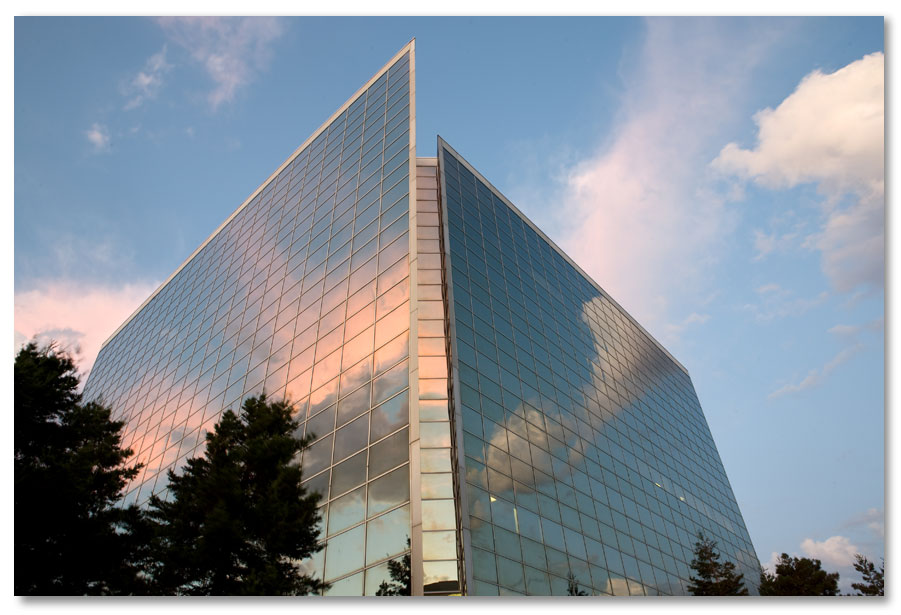
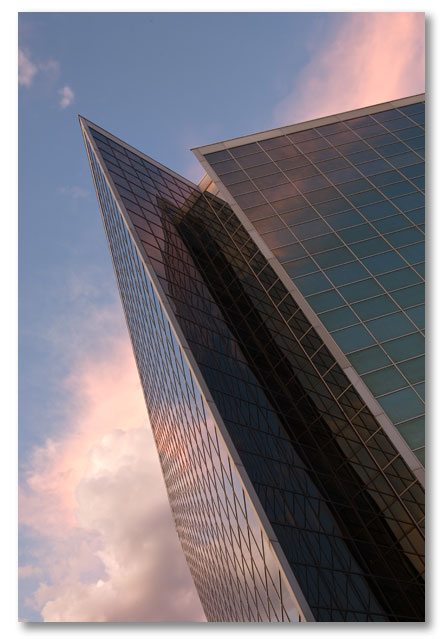

I’ve been neglecting uploading new photos to istockphoto for a few weeks. I did a bunch of istock work in July. Since then I’ve been taking a vacation from istock and worked on this blog instead. Two days ago while in San Francisco I took my camera out to get some sunset photos of the bay. Nothing was working so I headed back to the hotel. Across the road from our hotel is the office building from the above photos. The sun was so low that the building was in shadow, but the clouds above were still sun lit. I spent twenty minutes photographing the office building and came away with six istock worthy photos.
September 5, 2009 | Categories: Uncategorized | Tags: burlingame, office building, photo, photography, san francisco, sunset | Leave a comment
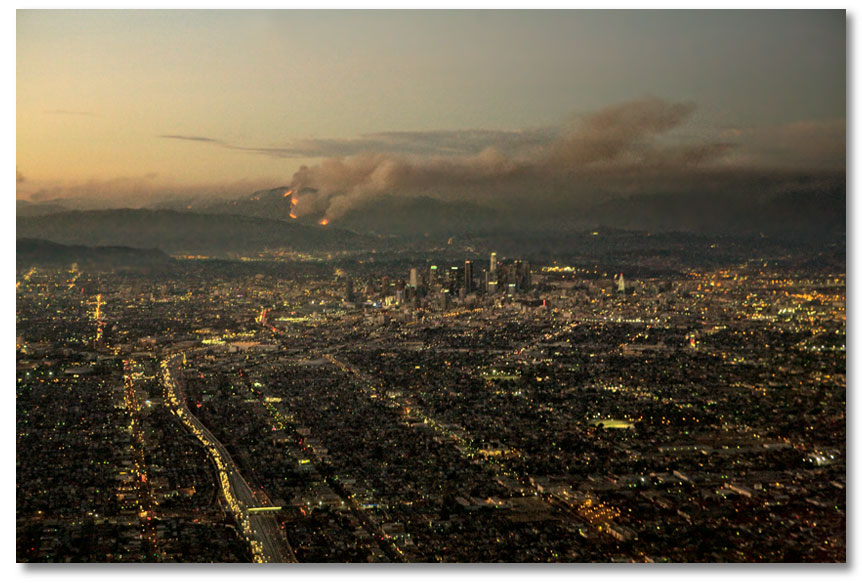 I can’t come up with a caption for this one. Everyone seems to have an opinion about Los Angeles. Maybe my readers can come up with a caption. I took this picture yesterday evening. I think the fires are a little more under control now.
I can’t come up with a caption for this one. Everyone seems to have an opinion about Los Angeles. Maybe my readers can come up with a caption. I took this picture yesterday evening. I think the fires are a little more under control now.
September 2, 2009 | Categories: Uncategorized | Tags: aerial, forest fire, Los angeles, photo, photography, sunset, wildfire | 11 Comments
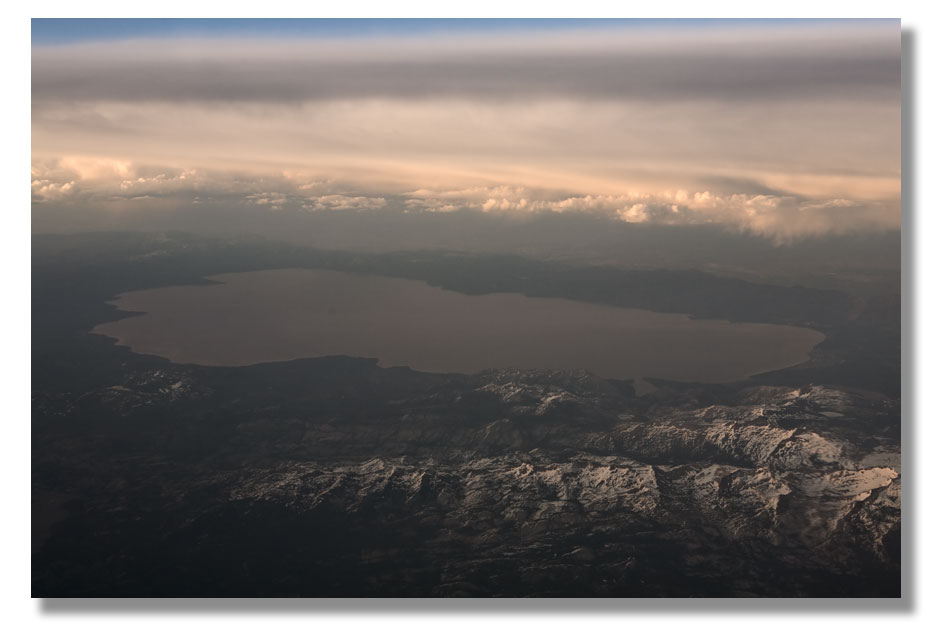
That’s Lake Tahoe in the middle of the frame. This view is looking towards the east. In the background dissipating thunderstorms glow in the last light of sunset. I hope our contrail didn’t ruin anyone’s perfect Lake Tahoe sunset photo.
May 27, 2009 | Categories: Flying the Line | Tags: aerial photo, california, Lake Tahoe, photo, photography, sunset | 2 Comments
 Here’s a sign that summer has started. These are thunderstorms over the Sierra Nevada Mountains in California. I took this picture yesterday while flying between Los Angeles and Seattle. We flew a safe distance from the weather. The sun was going down and I had some nice light to work with.
Here’s a sign that summer has started. These are thunderstorms over the Sierra Nevada Mountains in California. I took this picture yesterday while flying between Los Angeles and Seattle. We flew a safe distance from the weather. The sun was going down and I had some nice light to work with.
May 24, 2009 | Categories: Flying the Line | Tags: aerial, california, photo, photography, sierra nevada mountains, sunset, thunderstorms | 2 Comments
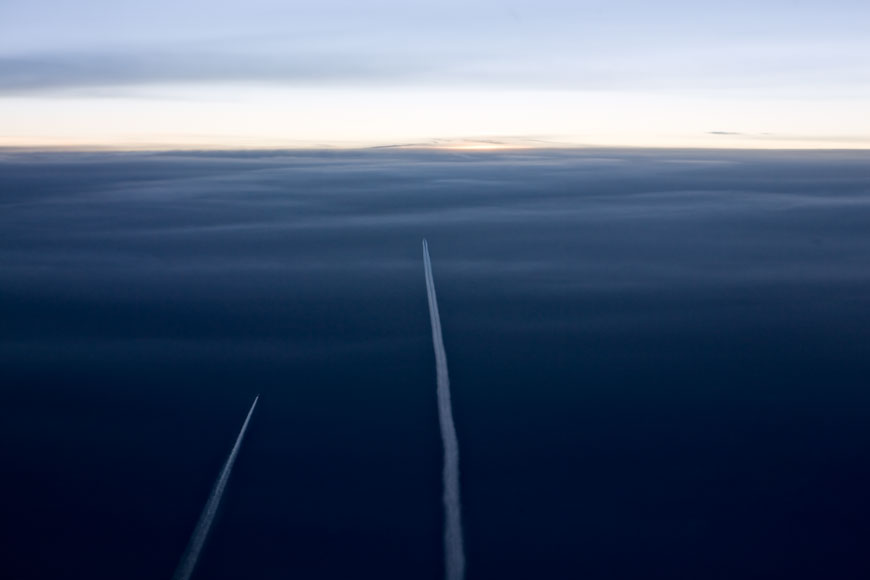
After reading the comments to my last post and then rereading the original post I think I need to clarify some things. When I started writing that post I had a clear direction, and then I started having so much fun writing about Bigfoot that I kind of lost my bearings. The trouble with blogging is there are no editors. Here is the condensed version of what I meant to say:
1) I have no problem with image manipulation. I manipulate every photo that I post on the web.
2) People (the nonphotographer general public) tend to believe that photographs depict the truth as long as the photo still looks like a photo
3) An obviously heavily edited photo loses its subconscious power of truthfulness
4) As a photographer you have to consider whether you want to get the power of a straight/believable image or use creativity and the editing process
Again, what does the lead photo have to do with any of this? The photo at the top was taken at 36,000 somewhere over Nebraska. Below us you can see two other westbound aircraft flying into the sunset. To me this photo looks realistic/not heavily edited. However, a lot of editing went into this photo. I won’t bore you with the detailed steps, but I did my best to get this photo to look like the scene I was through the view finder. Am I saying that is the only way to edit photo (try to make them look like the original scene)? No way! Do whatever you want. Just be mindful that at some point in the edit process you can cross the line from photography into digital art. It’s not in your hands. The viewer makes that decision.
March 21, 2009 | Categories: Uncategorized | Tags: aerial, aviation, flight, flying, photography, photoshop, sunset | 1 Comment

There was a nice sunset at San Francisco International this evening. This photo was captured from the top of the south parking garage. Surprisingly I got no hassle from security.
March 16, 2009 | Categories: Uncategorized | Tags: Airport, KSFO, photo, photography, san francisco, SFO, sunset | 1 Comment
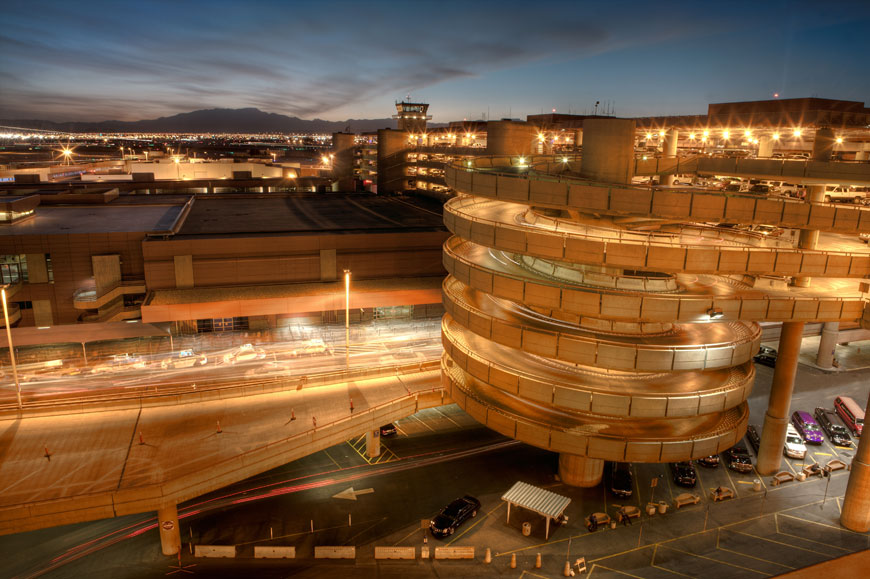
Warning to all you naysayers: Crawl Back into Your Shell or Risk Destruction. This Photo is Simply Too Much for You to Handle.
Don’t you know I can hear you talking? I’ve heard it all! “Dave has lost his edge. He spends too much time looking at boring art photography blogs. His photos have crossed the fine line between subtle and boring. It’s a shame that success has killed his motivation.”
Behold this photo and try to tell me you can’t feel the desert breeze blowing through your hair! You can’t. You could never tell such a soulless lie about this photo no matter how black your heart.
I knew it! You’re speechless. I shouldn’t have posted this image in a public forum. You’re not ready for such bold commentary on the human condition. It must be awful for you when you realize that mankind’s history of toil on this inhospitable planet has only resulted in garish overcomplexity and a world that no child wishes to inherit. Get used to your new burden of pain! It’s the price you pay for fixing your gaze upon a true work of genius.
Maybe you can take some comfort in the fact that along with its message of eternal sadness this photo is also staggeringly beautiful. Inside all this beauty is the seed of hope. It’s truly sad that your petty mind is so full of jealousy and despair. The tender kernel of hope I deliver in this photo could never take root in the polluted soil that is your brain.
February 28, 2009 | Categories: Uncategorized | Tags: Airport, art, HDR, High dynamic range, las vegas, Parking Garage, photo, photography, sunset | 5 Comments
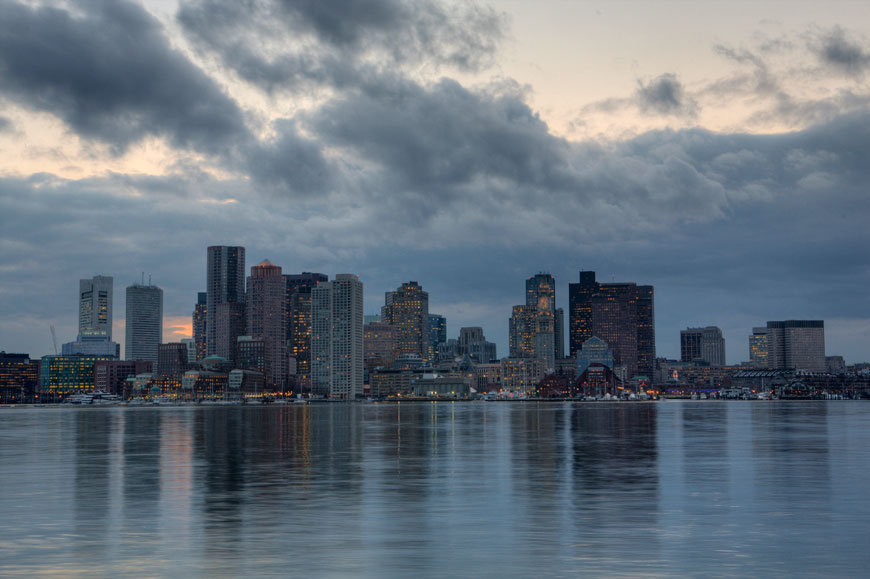
It’s been awhile since my last post — sorry. Last week I had a couple record traffic days. Thanks everyone for visiting and referring me to your friends. After my recent move to Milwaukee it’s been difficult for me to get online. Our home will go wireless next week so I should be able to get back to regular posting. All the posts I’ve made this month have been made from the road. Right now I’m typing this in the D-concourse food court at Las Vegas’s McCarran Airport. With your help I can get back to last week’s traffic levels. In a couple months I’ll be an internet millionaire. Hopefully, the Pizza Hut Express dinner I just ate doesn’t kill me first.
About the photo: this picture, like the previous post, is a high dynamic range (HDR) photo of Boston’s Skyline. I’ll admit that it is not a knock your socks off heroic photo of downtown, but it does show the power of HDR. If I hadn’t used the HDR process there would be no way to expose for the window lights in the buildings and also not overexpose the sky. This photo may not be awe inspiring, but it does accurately portray what downtown Boston looks like at nightfall. Ten years ago a photo like this would not have been possible.
One more note about this photo — have you ever noticed that a receding shoreline can make your horizon look crooked? Take a look at this photo and tell me if it looks like the horizon slants upwards from left to right. Recently, I have been taking a lot of photos of shorelines and I have found that unless the opposite shore runs exactly parallel to the camera there is a good chance it will look like your horizon is crooked. The effect is even worse through the camera’s view finder. If you try to level this false horizon you’ll find out once you download your photos that you’ve taken a lot of slanted pictures. What’s the solution you ask? If you can’t trust the horizon you have to trust vertical lines. In this case I knew the buildings were standing straight up and down. When I framed the picture I made sure to keep the vertical buildings straight and did my best to ignore the false horizon created by the receding shoreline.
February 28, 2009 | Categories: Uncategorized | Tags: Boston, downtown, harbor, HDR, High dynamic range, photo, photography, skyline, sunset | 5 Comments
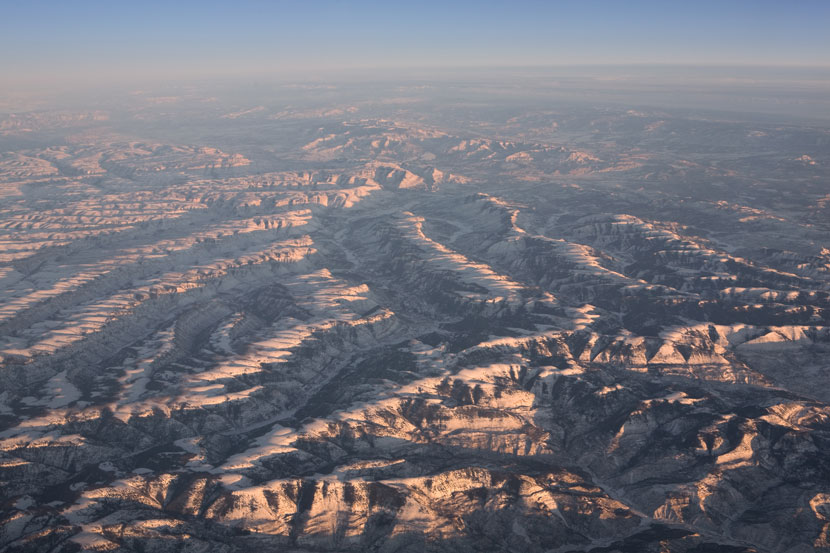
Is this Utah week? I have to admit that I am getting tired of scrolling down my blog and seeing one after another aerial photos of Utah covered in snow, but I can’t resist posting another. I got this photo yesterday while flying from Las Vegas to New York (again). The sun was setting and our jumpseat rider was yammering on and on about how he once stood up to the base chief pilot. Blah Blah Blah. Meanwhile, I was getting some great shots of the desert ridges below.
I have one more shot from yesterday that I want to post, and we are flying to Vegas again today. Look out for more Utah shots.
January 5, 2009 | Categories: Flying the Line | Tags: aerial, canyon, flight, landscape, photography, scenic, snow, sunset, utah, winter | Leave a comment
 To give you a sense of the drop here is a bit of beach below the cliff. Check out the ship wreckage. I didn’t want my bleached bones adding to the aesthetic for the next photographer.
To give you a sense of the drop here is a bit of beach below the cliff. Check out the ship wreckage. I didn’t want my bleached bones adding to the aesthetic for the next photographer. Here is the view to the north of my perch taken about twenty minutes before sunset. This area is called Point Bonita. If you look really close you can see some cars and people on a distant overlook. A lesson for new landscape photographers: The car pullout is sometimes the best overlook. Sometimes there is no need to hike your equipment in for a better look. Many of Ansel Adam’s most famous photos were taken from car pullouts, and lots of those were taken from while standing on the roof of his car! Other times you’ll need to do some hiking. I find Google Maps satellite view the best tool for scooting photo locations. I found this location via Google Maps. There wasn’t an official trail to this overlook. You just have to discover yourself. With the help of Google and The National Space Program everything is now easy to find!
Here is the view to the north of my perch taken about twenty minutes before sunset. This area is called Point Bonita. If you look really close you can see some cars and people on a distant overlook. A lesson for new landscape photographers: The car pullout is sometimes the best overlook. Sometimes there is no need to hike your equipment in for a better look. Many of Ansel Adam’s most famous photos were taken from car pullouts, and lots of those were taken from while standing on the roof of his car! Other times you’ll need to do some hiking. I find Google Maps satellite view the best tool for scooting photo locations. I found this location via Google Maps. There wasn’t an official trail to this overlook. You just have to discover yourself. With the help of Google and The National Space Program everything is now easy to find! Here is the payoff. This is Point Bonita Lighthouse and the entrance to The Golden Gate. This photo was taken well after the sun had fallen below the horizon. It was actually somewhat darker in reality than this photo depicts. I was having a hard time getting my camera to auto focus and it was way too dark to manually focus. I couldn’t see much through the view finder except shadows. To get my camera to focus I had to place the center focus point on the lighthouse, let the camera auto focus, and then switch to manual focus and recompose the picture without bumping the focus ring. There was no way to tell if this technique was working. My camera’s LCD wasn’t showing enough detail, even fully zoomed in, to decipher whether the lighthouse was in focus. To hedge my bets I shot with a tiny aperture in order to get maximum depth of field. Also, I took lots of duplicate pictures hoping that one would be sharp.
Here is the payoff. This is Point Bonita Lighthouse and the entrance to The Golden Gate. This photo was taken well after the sun had fallen below the horizon. It was actually somewhat darker in reality than this photo depicts. I was having a hard time getting my camera to auto focus and it was way too dark to manually focus. I couldn’t see much through the view finder except shadows. To get my camera to focus I had to place the center focus point on the lighthouse, let the camera auto focus, and then switch to manual focus and recompose the picture without bumping the focus ring. There was no way to tell if this technique was working. My camera’s LCD wasn’t showing enough detail, even fully zoomed in, to decipher whether the lighthouse was in focus. To hedge my bets I shot with a tiny aperture in order to get maximum depth of field. Also, I took lots of duplicate pictures hoping that one would be sharp. This is a closer view of the lighthouse. I used my Canon 135 f/2 L lens for this. The prime lens is not optimal for landscape shots. It doesn’t zoom. However, it worked well here because its light weight made it easier to handle on a tripod in the dark than a cumbersome 70-200 mm zoom. I had to use the same focus and recompose trick that I used for the previous shot. I don’t know if that type of movement would have been possible with a big white lens.
This is a closer view of the lighthouse. I used my Canon 135 f/2 L lens for this. The prime lens is not optimal for landscape shots. It doesn’t zoom. However, it worked well here because its light weight made it easier to handle on a tripod in the dark than a cumbersome 70-200 mm zoom. I had to use the same focus and recompose trick that I used for the previous shot. I don’t know if that type of movement would have been possible with a big white lens. This shot is similar settings as the previous picture. It was also shot with my 135mm lens, just tilted up higher to get some city lights in the background. Once again, I focused on the lighthouse. Look how at how sharp the city lights look in the distance. How can this be? I focused on the lighthouse and was shooting at f/6.3. For the long answer read this Wikipedia entry on Hyperfocal Distance.
This shot is similar settings as the previous picture. It was also shot with my 135mm lens, just tilted up higher to get some city lights in the background. Once again, I focused on the lighthouse. Look how at how sharp the city lights look in the distance. How can this be? I focused on the lighthouse and was shooting at f/6.3. For the long answer read this Wikipedia entry on Hyperfocal Distance.


 I can’t come up with a caption for this one. Everyone seems to have an opinion about Los Angeles. Maybe my readers can come up with a caption. I took this picture yesterday evening. I think the fires are a little more under control now.
I can’t come up with a caption for this one. Everyone seems to have an opinion about Los Angeles. Maybe my readers can come up with a caption. I took this picture yesterday evening. I think the fires are a little more under control now.
















 Here’s a sign that summer has started. These are thunderstorms over the Sierra Nevada Mountains in California. I took this picture yesterday while flying between Los Angeles and Seattle. We flew a safe distance from the weather. The sun was going down and I had some nice light to work with.
Here’s a sign that summer has started. These are thunderstorms over the Sierra Nevada Mountains in California. I took this picture yesterday while flying between Los Angeles and Seattle. We flew a safe distance from the weather. The sun was going down and I had some nice light to work with.
